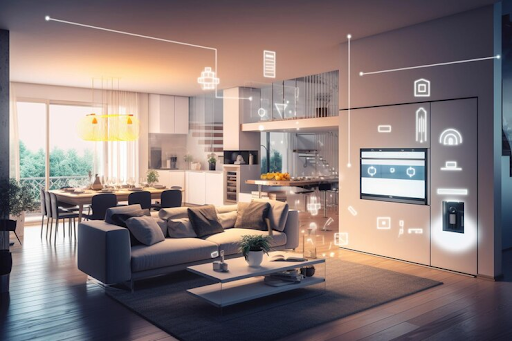In today’s rapidly evolving technological landscape, the convergence of smart home automation systems and sustainable power installation is paving the way for more efficient, eco-friendly living environments. This article delves into how these advancements are reshaping modern homes and contributing to a greener future.
The Rise of Smart Home Automation Systems
Smart home automation systems have revolutionized the way we interact with our living spaces. These systems integrate various devices and appliances, allowing homeowners to control and monitor them remotely via smartphone apps or voice commands. From adjusting room temperatures to managing security cameras, smart home automation offers convenience, comfort, and enhanced energy efficiency.
The backbone of a Smart Home Automation System typically includes interconnected devices such as smart thermostats, lighting controls, smart plugs, and entertainment systems. These devices communicate through a central hub or a network protocol like Zigbee or Z-Wave, enabling seamless interaction and automation.
Enhancing Energy Efficiency through Automation
One of the primary advantages of integrating smart home automation is its potential to optimize energy usage. For instance, smart thermostats can learn household heating and cooling patterns and adjust settings accordingly, reducing energy wastage. Similarly, smart lighting systems can dim or turn off lights in unoccupied rooms, further conserving electricity.
Moreover, automation extends beyond individual devices to holistic energy management. Homeowners can set schedules for appliances to run during off-peak hours when electricity rates are lower, leveraging cost savings and reducing strain on the power grid.
The Role of Sustainable Power Installation
Complementing smart home automation is the installation of sustainable power sources such as solar panels, wind turbines, or hybrid systems. These technologies generate electricity from renewable resources, significantly reducing reliance on fossil fuels and lowering carbon footprints.
Solar panels, in particular, are gaining popularity due to their affordability and accessibility. They convert sunlight into electricity through photovoltaic cells, providing a clean and renewable energy source for residential use. When combined with energy storage solutions like home batteries, solar power can supply electricity even during grid outages or peak demand periods.
Integration of Smart Home Automation with Sustainable Power
The synergy between smart home automation systems and sustainable power installation unlocks numerous possibilities for homeowners seeking energy independence and environmental stewardship. By integrating these technologies, households can achieve a more comprehensive approach to energy management and conservation.
For instance, smart meters and energy monitoring systems enable real-time tracking of electricity consumption. This data empowers homeowners to make informed decisions about energy usage, identify inefficiencies, and adjust settings accordingly to optimize performance and reduce costs.
Advancements in Grid-Interactive Technologies
Another exciting development is the emergence of grid-interactive technologies that facilitate two-way communication between smart homes and the utility grid. This bi-directional exchange enables homeowners to sell surplus energy generated by solar panels back to the grid, contributing to grid stability and earning credits or incentives in return.
Smart Home Automation for Energy-Efficient Living
In practice, smart home automation enhances daily routines while promoting energy-efficient practices. Imagine waking up to a warm house in winter, courtesy of a programmable thermostat that anticipates your schedule. Throughout the day, sensors adjust lighting levels based on natural light availability and occupancy, reducing unnecessary electricity consumption.
Environmental Benefits of Sustainable Power Installation
The environmental benefits of sustainable power installation extend beyond individual households to broader ecological considerations. By harnessing renewable resources like solar and wind power, communities can mitigate greenhouse gas emissions, combat climate change, and preserve natural resources for future generations.

